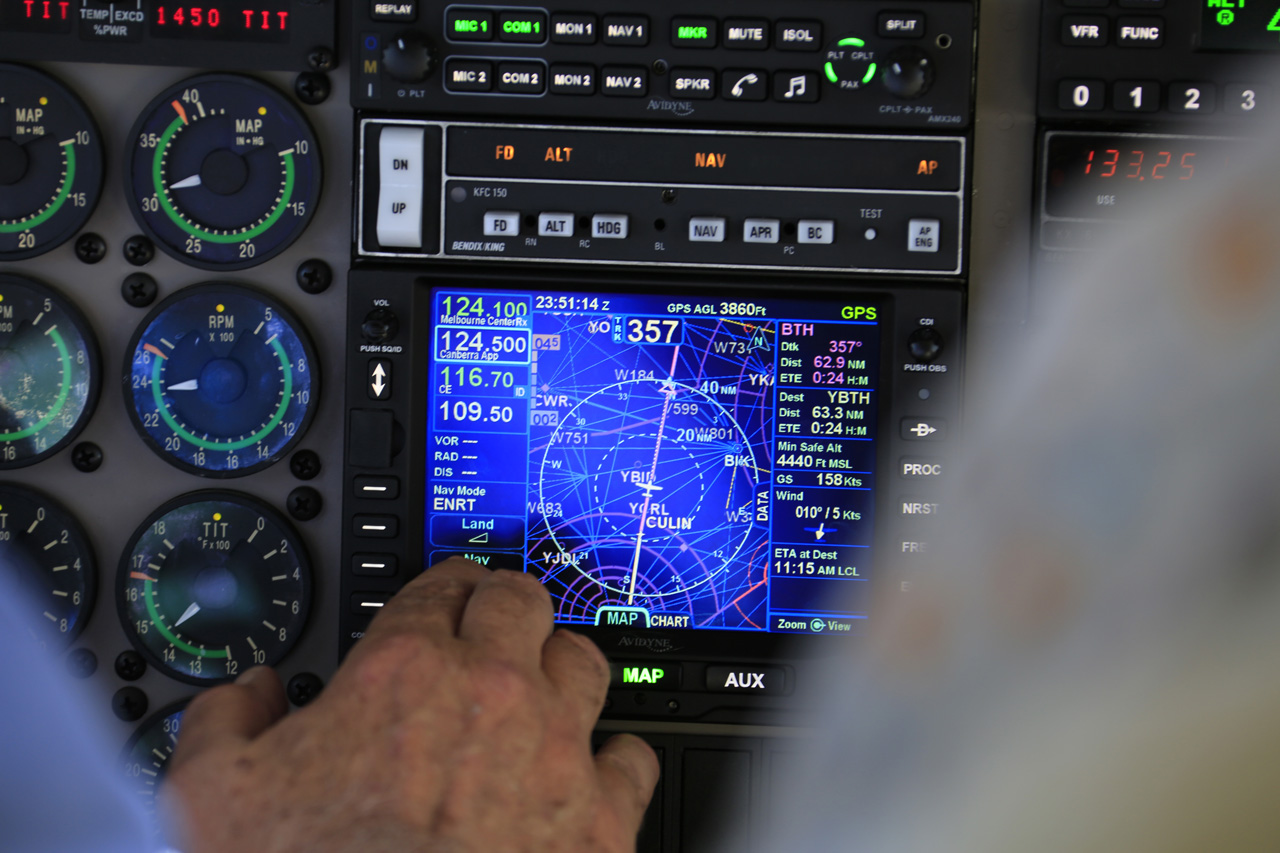A low-cost ADS-B system for VFR aircraft has the potential to reduce the ever-present threat of mid-air collision
It’s long been recognised that there are serious limitations with unalerted ‘see and avoid’ techniques.
For example, a 1991 Australian Transport Safety Bureau report, concluded: ‘while it undoubtedly prevents many collisions, the [see and avoid] principle is far from reliable … even when pilots are looking out, there is no guarantee that other aircraft will be sighted.
‘…The human visual system is better at detecting moving targets than stationary targets, yet in most cases, an aircraft on a collision course appears as a stationary target in the pilot’s visual field. The contrast between an aircraft and its background can be significantly reduced by atmospheric effects, even in conditions of good visibility.’
In other words, there are clear safety benefits in knowing where other traffic is operating.
Technologies such as airborne collision avoidance systems provide a safety benefit that augments see and avoid—but they are very expensive and therefore not widely used in GA aircraft.
All aircraft certified for IFR flight in Australia must now be fitted with 1090 MHz automatic dependent surveillance-broadcast (ADS-B out) equipment, which transmits the aircraft’s position and height to ATC and other aircraft.
Such equipment must comply with technical standards that provide enough integrity to allow the ADS-B information to be used by Air Traffic Control for aircraft to aircraft separation.
But high integrity comes at a cost. A typical IFR installation is expensive—depending on equipment already in the aircraft, it can be $5000 or more.
There is no requirement for VFR aircraft to be fitted with ADS-B, though replacement transponders for VFR aircraft operating in some airspace must be Mode S and preferably ADS-B capable.
Enhanced safety at minimal cost
There are significant safety benefits in all traffic being able to ‘see’ other traffic in the vicinity, regardless of whether it is IFR or VFR.
At the request of industry through the Australian strategic air traffic management group (ASTRA), CASA is looking at ways to encourage the installation of low-cost ADS-B equipment in VFR aircraft.
For a start, CASA is proposing measures to reduce the cost of installing ADS-B equipment in aircraft generally. Subject to a number of conditions (non-commercial operations, certain weight and performance limits, non-pressurised aircraft etc.), CASA is proposing standard technical data that can avoid the need for, and cost of, an engineering order. This won’t overcome an installer’s per-hour charges.
There is now a range of equipment on the market which is ADS-B compliant and meets an appropriate technical standard suitable for general situation awareness (but not for ATS separation)—and a lower price tag to match.
There is also reputable ADS-B equipment available, which has a manufacturer declaration of compliance with IFR ADS-B technical standards, but which is not formally ‘authorised’ under those standards. Some countries allow aircraft in the sport aviation, experimental or amateur-build categories to be fitted with this equipment and operated in the same airspace as aircraft fitted with equivalent formally authorised ADS-B equipment. CASA is proposing similar standards for this country.
Cost-effective solutions also being considered are portable electronic conspicuity devices.
One unit on the market measures about 8 cm by 5 cm by 3 cm and attaches to the aircraft windscreen. It incorporates an ADS-B transmitter and receiver; traffic information is displayed on a tablet device.
Such devices are about $1000. They can be used now, in receive-only mode. Changes to regulations allowing them to also be used in transmit mode are expected to be in place by the second half of next year, following industry consultation.
There is, of course another broadcasting device in almost every GA aircraft; your radio. If in any doubt about the presence of other traffic use it. Alerted see-and-avoid has been shown to be about eight times more effective than unalerted see-and-avoid.



Comments are closed.